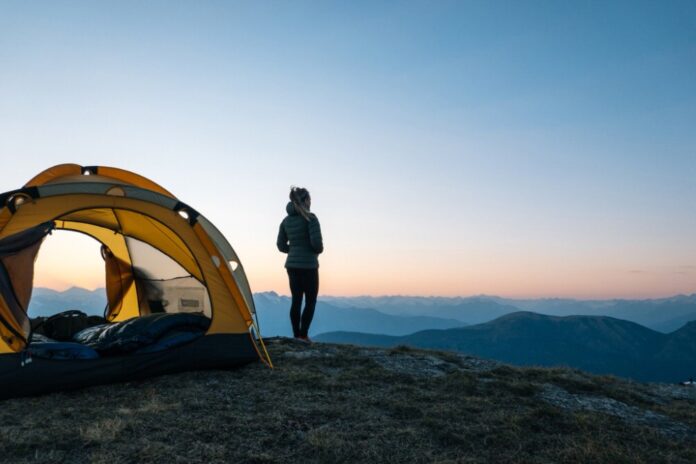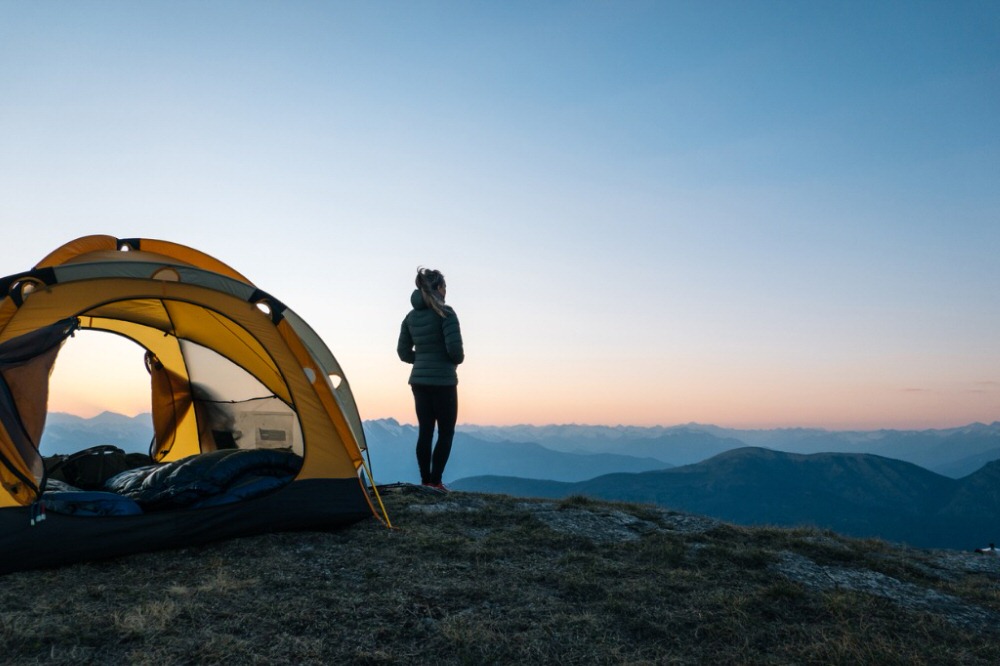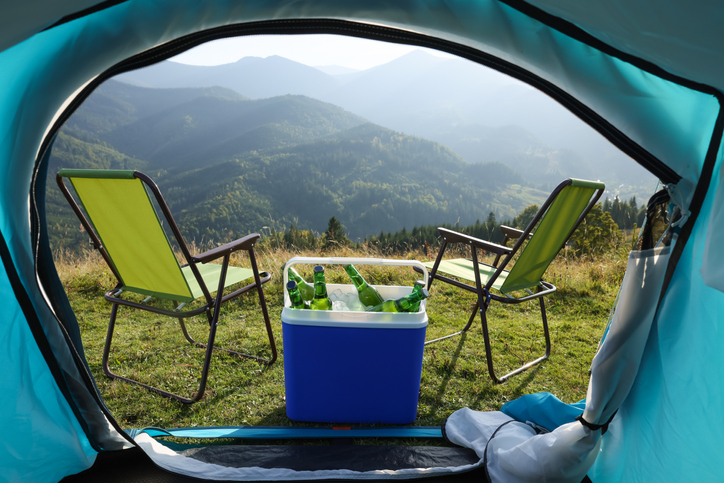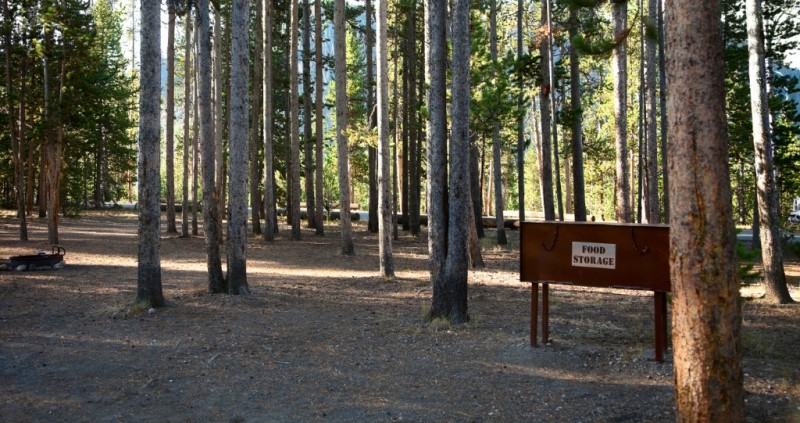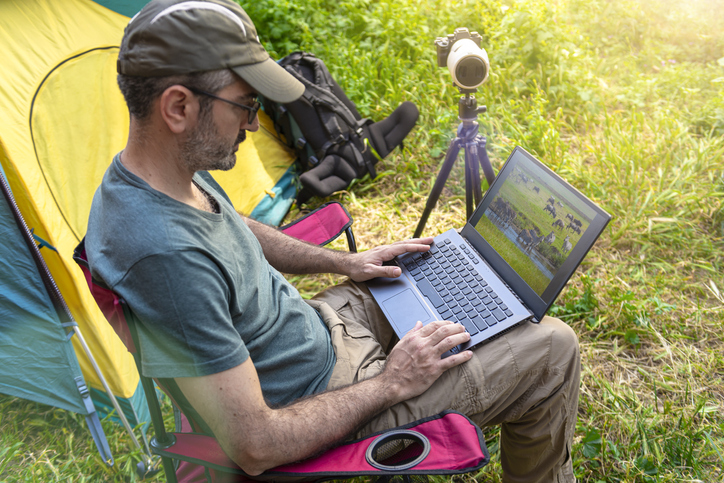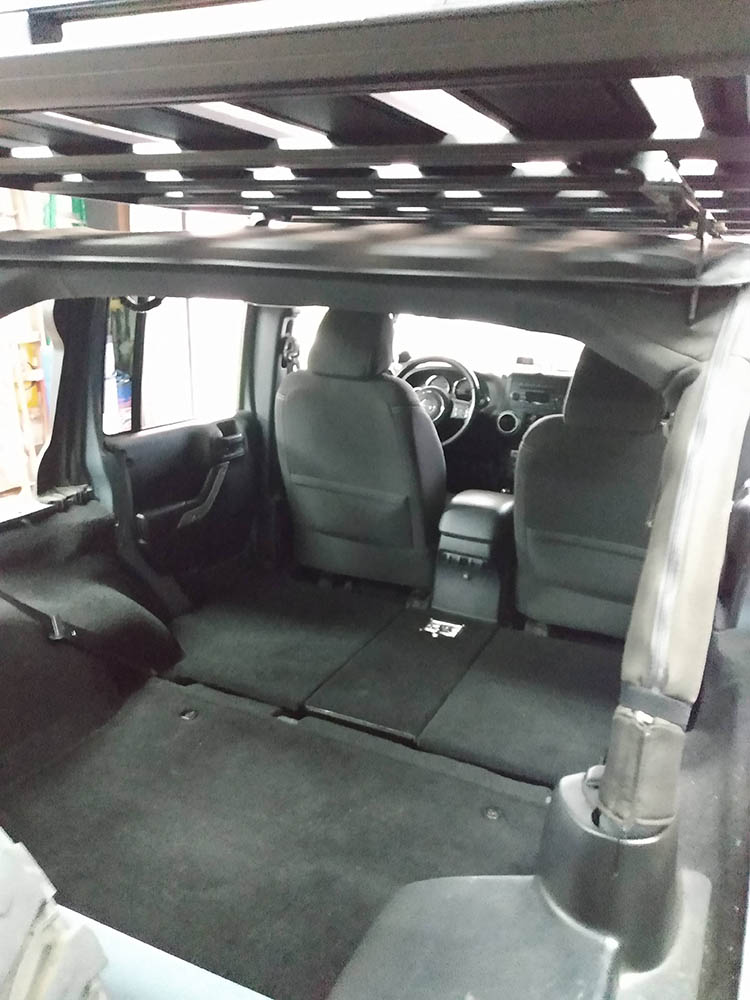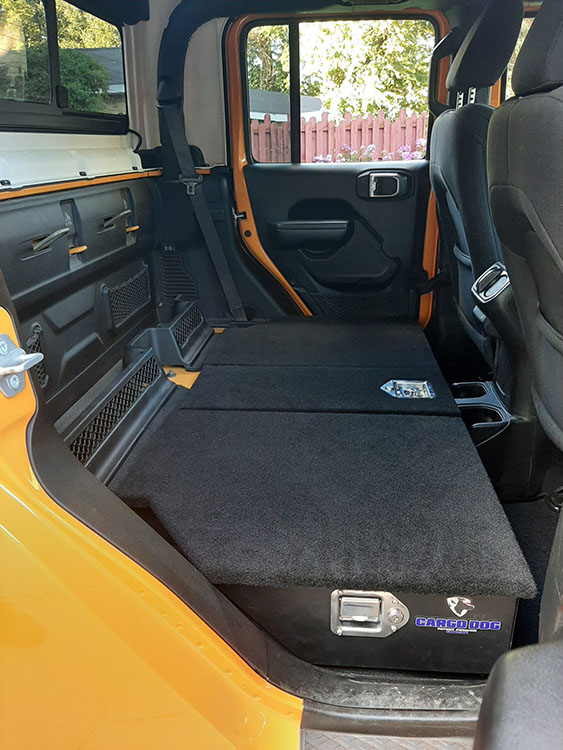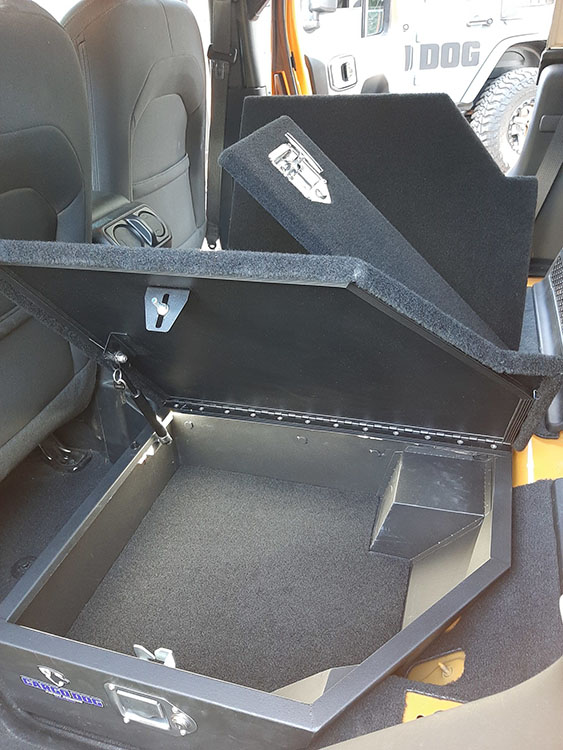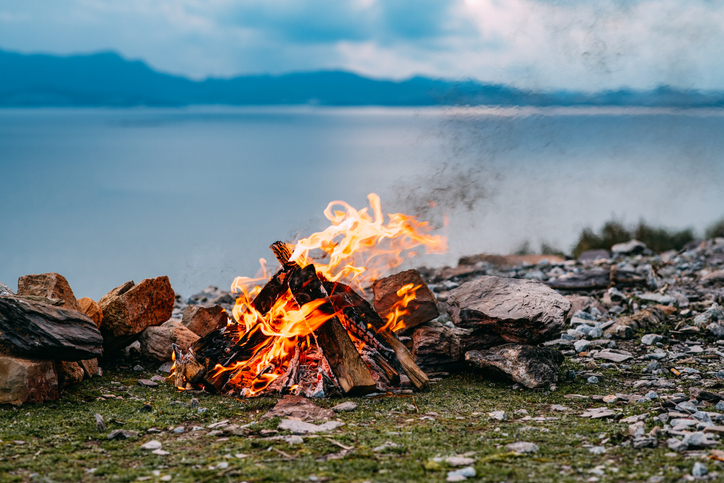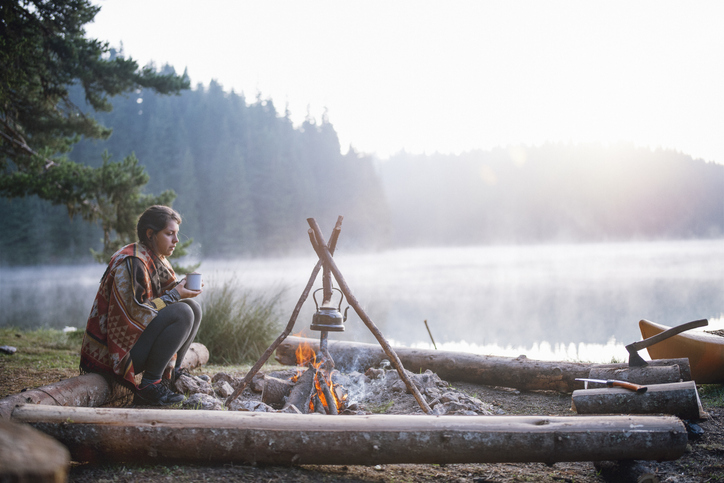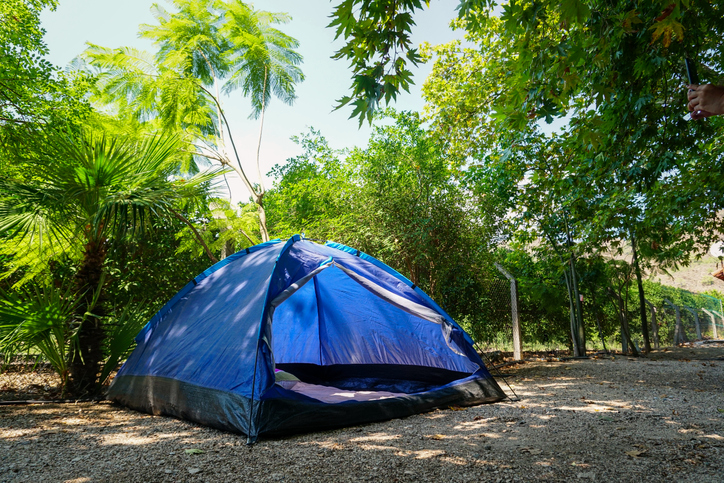Image by AscentXmedia via iStock
The best thing about camping is that there are hardly any limits when it comes to choosing a holiday destination. But when deciding where to go, you should not only rely on your preferences but also decide on the aspect of safety.
Every camper – whether a first-timer or a seasoned one – should consider how to stay safe when camping. An accident, a flat tire, or another melee might be around the corner, so you need to be prepared.
This is especially true if you want to go wild camping. It’s important to find out where camping is allowed and have the proper gear and training to address emergencies. To do so, this article explores a few tips on how to stay safe when camping.
Table of Contents
- How to Stay Safe When Camping: Store Food Properly
- Keep Your Expensive Gear Safe
- How to Stay Safe When Camping: Keep an Eye on the Fire
- Choose a Safe Campsite
- Recommended Overlanding Gear
How to Stay Safe When Camping: Store Food Properly
Image by Liudmila Chernetska via iStock
Food is an instant magnet for wild animals. They can smell a camp meal from miles away. Proper food storage is one of the best ideas on how to stay safe when camping because it will keep wildlife out of your campsite.
When you’re backcountry camping, the National Park Service recommends that you have a site for cooking that’s separate from where your tent is – at least 100 yards away (your cooking site should also be at least 100 yards from water sources). What’s more, take care not to get food on your clothes, as you’ll take food smells back to your tent.
Photo by Terryfic3D via iStock
Smart food storage is a must, too. If you’re in an established campground, keep all food in airtight containers, inside a cooler, and inside your vehicle, or, if provided, bear boxes (as shown above). If you’re in the backcountry, keep food in food sacks that hang from trees to discourage wildlife from helping themselves to your food.
In addition to food, litter also attracts wildlife. Keep your campsite clean and make sure your waste is properly stored. Always double-wrap your trash in odor-resistant bags and hang your trash from a branch that is at least 10 feet off the ground. In an established campsite, take trash to receptacles rather than letting it accumulate in a trash bag at your campsite. When learning how to stay safe when camping, this is as simple a lesson as you’ll get!
Keep Your Expensive Gear Safe
Photo by ugurhan via iStock
I don’t know about you, but when I go camping, I have some pricey gear with me that I don’t feel comfortable simply leaving in my tent or trailer. So, it isn’t just how to stay safe when camping for me – it’s also how to keep my stuff safe!
I have expensive camera gear, an iPad, a laptop, a GoPro…you get the point. The question is, where do you keep expensive items like this when you’re camping?
I’d argue that if you’re backpacking or backcountry camping, you likely don’t have an arsenal of expensive gear with you anyway, and if you do, who’s in the backcountry to steal it?
But, if you’re in an established campground, you never know who might try to help themselves to your stuff. That’s why Cargo Dog is such a great investment!
Cargo Dog is an ingenious in-floor storage solution for Jeep Wranglers and Gladiators. It’s ingenious for a few reasons, too…
First, its incognito design makes it look as though it’s part of the original truck. When the lid is closed and someone peeks inside your vehicle, it simply looks like a flat floor, as shown above. Its inconspicuous nature means there’s a lesser likelihood that someone tries to break into your vehicle.
Second, you can customize Cargo Dog to your specific needs. As you can see above, you can remove the entire backseat and replace it with a side-to-side storage solution. Alternatively, if you don’t need quite that much locked storage, you can remove two-thirds of the back seat and leave one rear seat for passengers.
Third, Cargo Dog is made of rugged and durable materials right here in the USA. The build quality is second-to-none, and the fitment in the Wrangler Unlimited and Gladiator is perfect. There’s even in-box lighting, so you can see your gear!
On top of that, installing Cargo Dog only takes about 10 minutes. And unlike other in-floor storage solutions, it’s also easy to remove this system and replace the seats as needed.
Check out the video above from the Cargo Dog Jeep Storage YouTube channel and let Mike, the owner of Cargo Dog, explain how easy it is to install and use Cargo Dog in your Jeep.
How to Stay Safe When Camping: Keep an Eye on the Fire
Image by AegeanBlue via iStock
The benefits of a campfire are obvious. The light and warmth create a particularly pleasant atmosphere. And on colder nights, you can spend some time outdoors without freezing. Fire is also great for preparing warm meals – just remember to cook away from your sleeping area!
Before heading out on your camping trip, confirm whether or not open fires are allowed. Also check for burn bans to ensure that you comply with local regulations (and that you don’t accidentally start a forest or brush fire). If you are allowed to have a fire, there are some general rules to follow…
Flying sparks are dangerous and often occur in stronger winds. Tighter mesh fire baskets or fire bowl spark arrestors can help contain sparks. Make sure there are no flammable objects nearby and extinguish the fire when the wind is too strong, and the fire could spread.
Photo by ArtistGNDphotography via iStock
If there are already fire pits at your campsite, you should use them to prevent the fire from spreading. If fire pits aren’t available, build your own using non-combustible surfaces such as a fire bowl or an area bordered by stones and cleared of dry materials for several feet in all directions.
Adults must supervise the campfire at all times. Above all, never leave children and animals alone with the fire. Be prepared in case something goes wrong and you need to act. As a precaution, always have 20 to 30 liters of water in a bucket, sand, or a fire blanket near the fire.
Before you go to sleep, ensure that the embers have burned down completely. If not, use water, sand, or a fire blanket to extinguish the fire, so it doesn’t reignite and spread overnight.
Choose a Safe Campsite
Image by Tamer Dagas via iStock
The campsite selection is very important when learning how to stay safe when camping. For example, when you’re in the backcountry, avoid wind-prone areas like ridges and crests, and never camp below rock faces where falling rocks could cause injuries or worse.
In both backcountry and established campgrounds, inspect sites for widowmakers – dead trees that could fall on your tent and kill you instantly. Your site should also be on high ground. If you camp near a stream or river, particularly in the spring and summer, the influx of runoff during the day could put your campsite underwater.
Swampy regions are also not suitable for camping, as otherwise, there is a risk that your site will be a muddy mess (and one with tons of mosquitos, too). It’s ideal to pitch your tent away from marshy areas, preferably where there’s a breeze to help keep bugs at a minimum.
Of course, every campsite is different. Heck, every camping trip is different, too! Some of these suggestions may apply in one situation and not in another, so it’s important to remain vigilant and be smart about the choices you make when camping.
Recommended Overlanding Gear:



